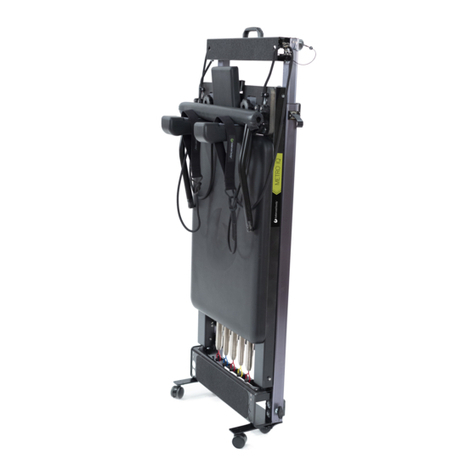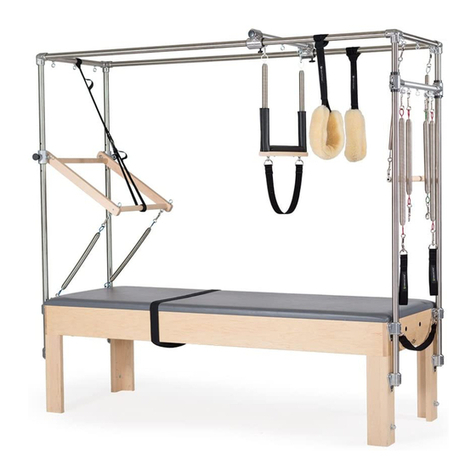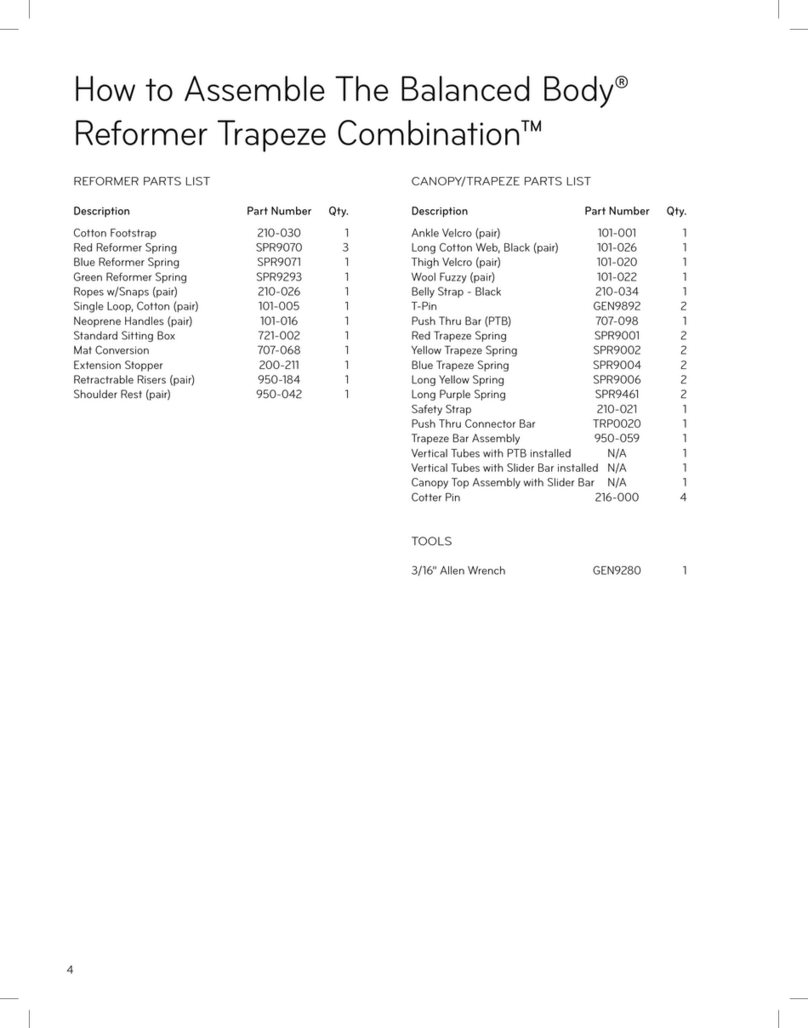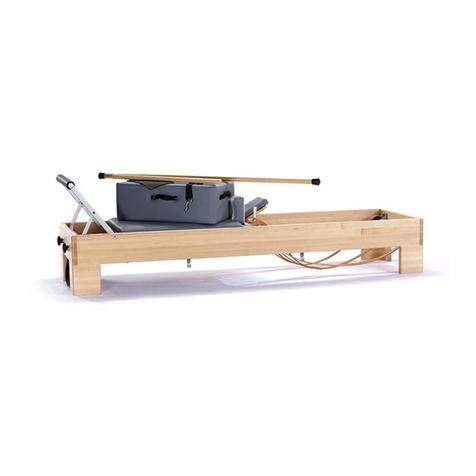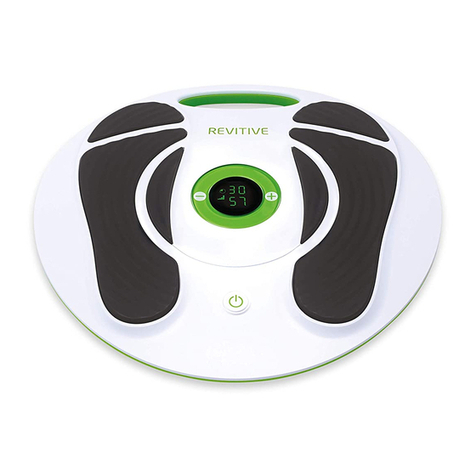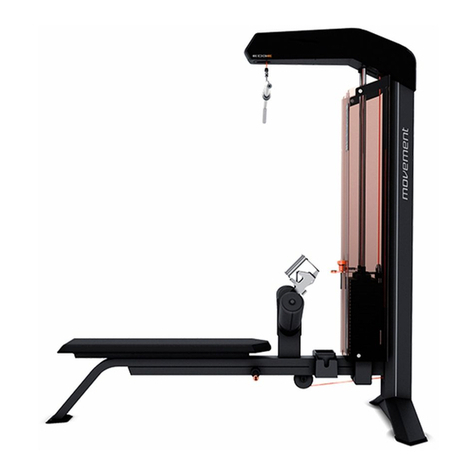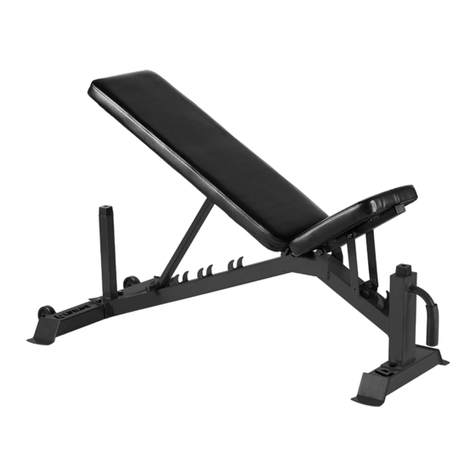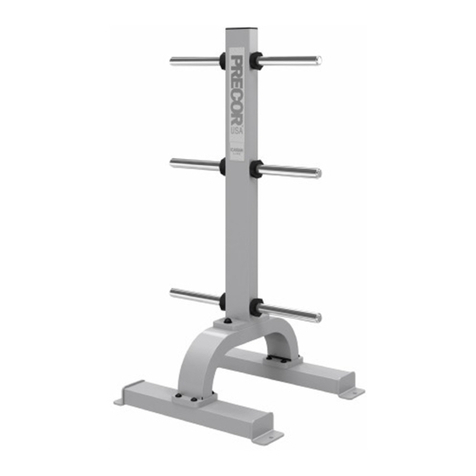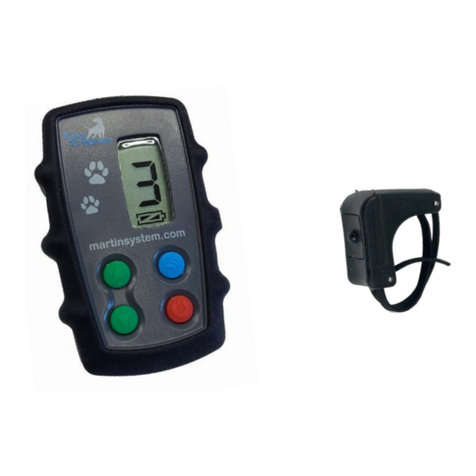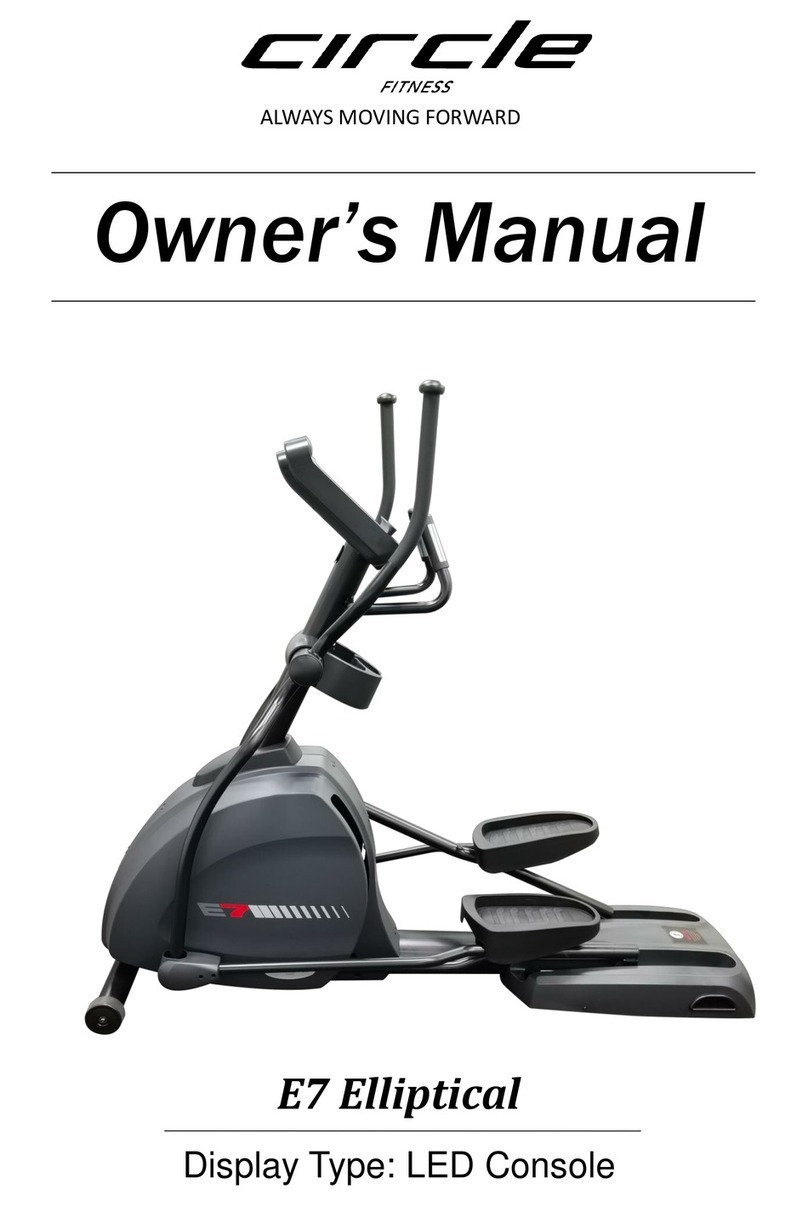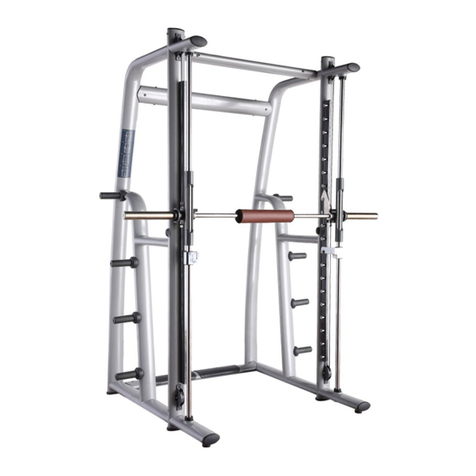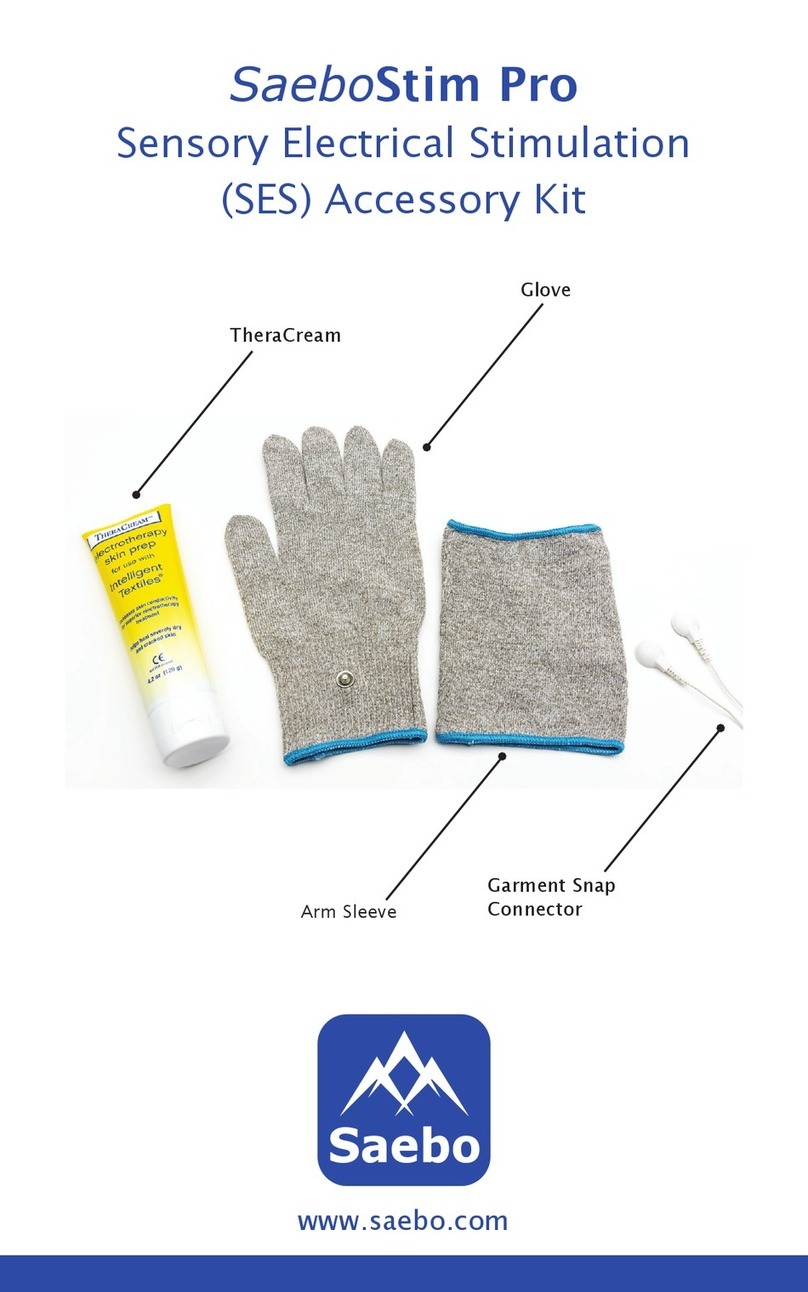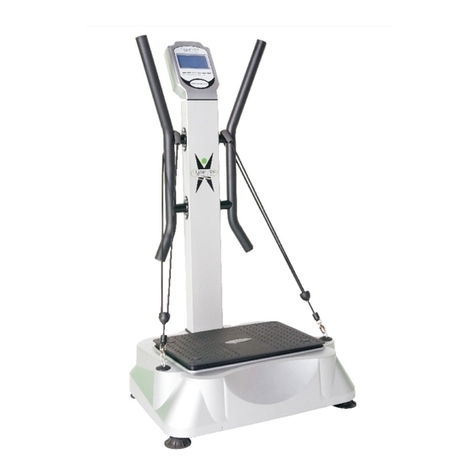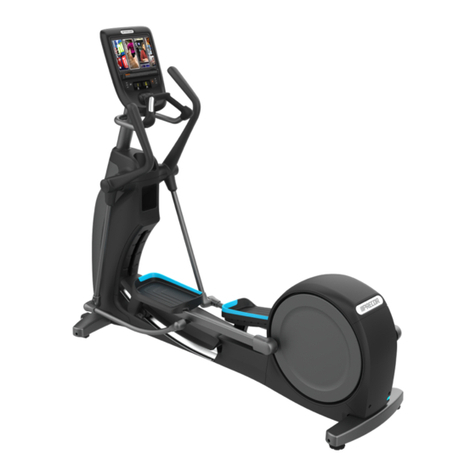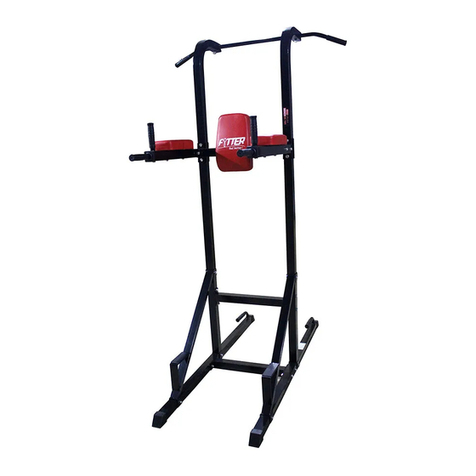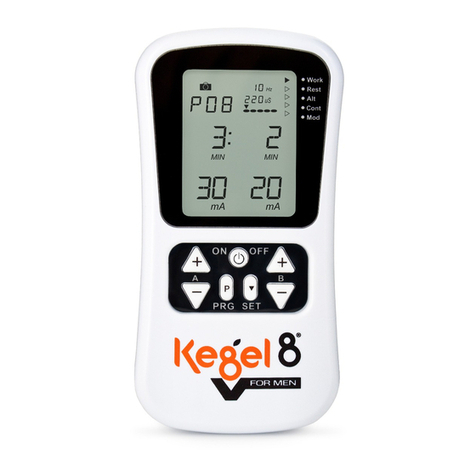Balanced Body Precision Rotator Discs User manual
Other Balanced Body Fitness Equipment manuals
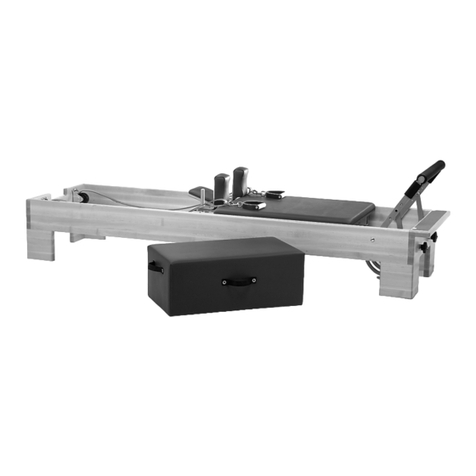
Balanced Body
Balanced Body Legacy Reformer User manual
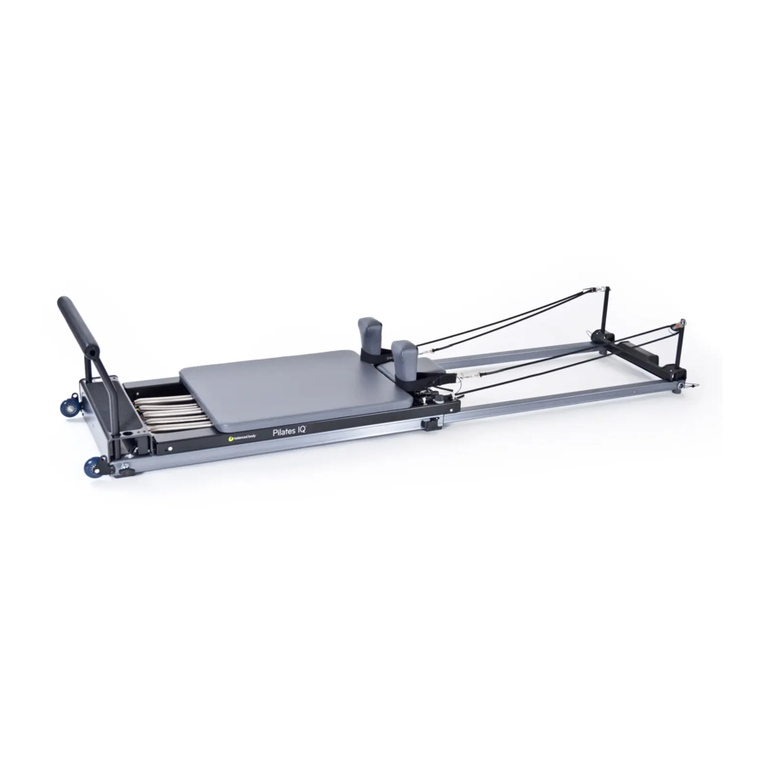
Balanced Body
Balanced Body Pilates IQ Reformer User manual
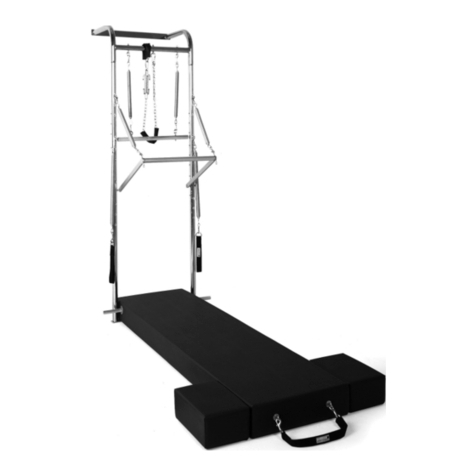
Balanced Body
Balanced Body Wall Tower Administrator Guide
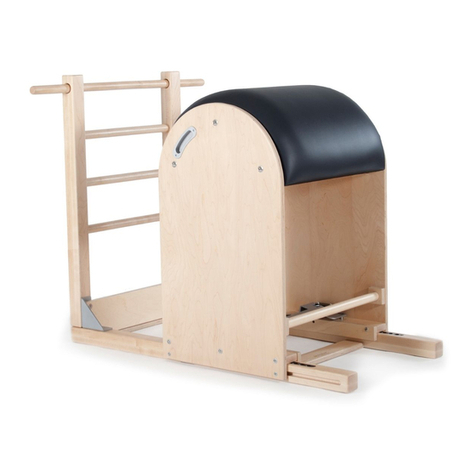
Balanced Body
Balanced Body Ladder Barrel Manual
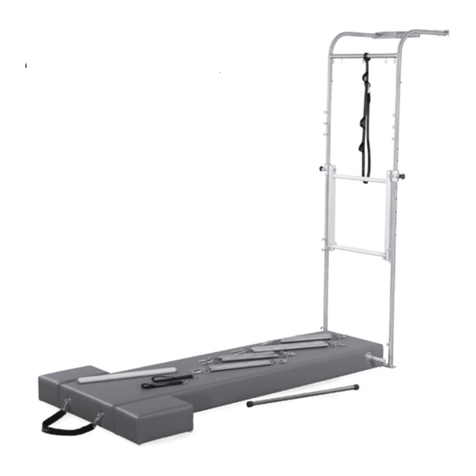
Balanced Body
Balanced Body CenterLine Pole System Programming manual
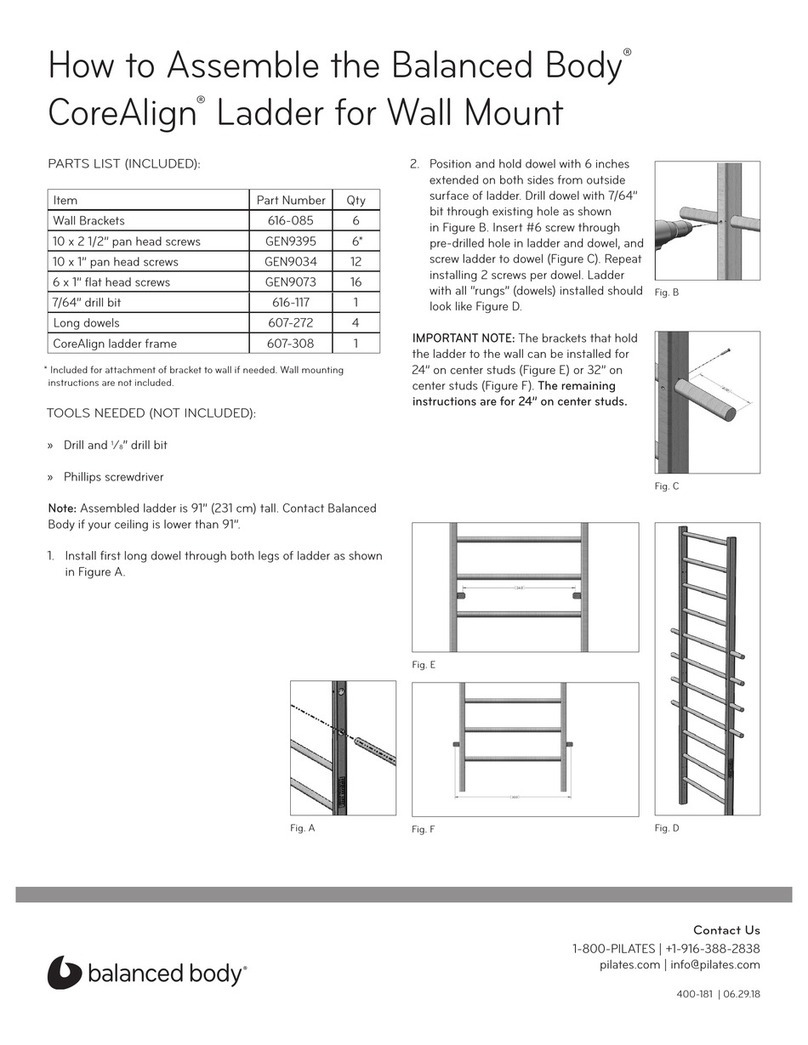
Balanced Body
Balanced Body CoreAlign 616-085 Operation instructions

Balanced Body
Balanced Body Pilates IQ Reformer Manual
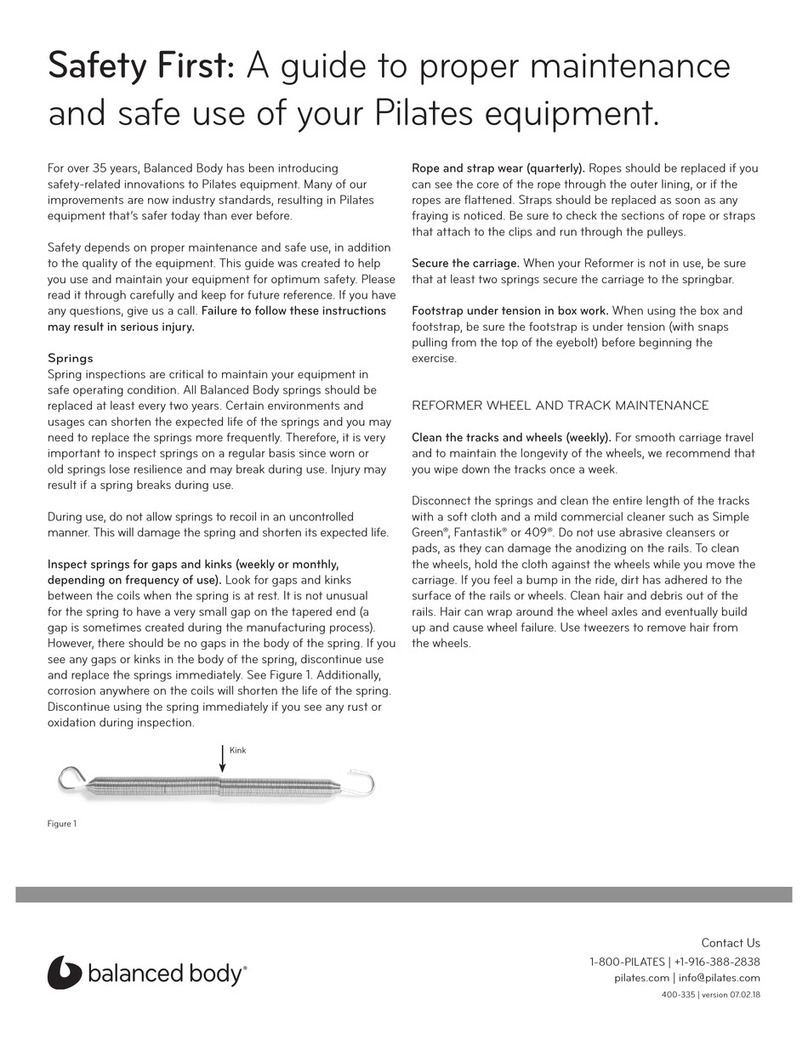
Balanced Body
Balanced Body Allegro CC User manual
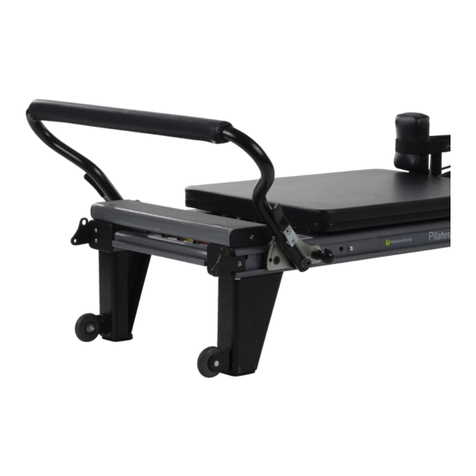
Balanced Body
Balanced Body Allegro 36395 User manual
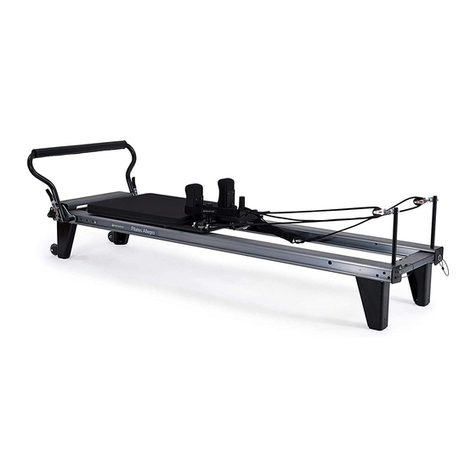
Balanced Body
Balanced Body Allegro Legs Kit Instruction sheet
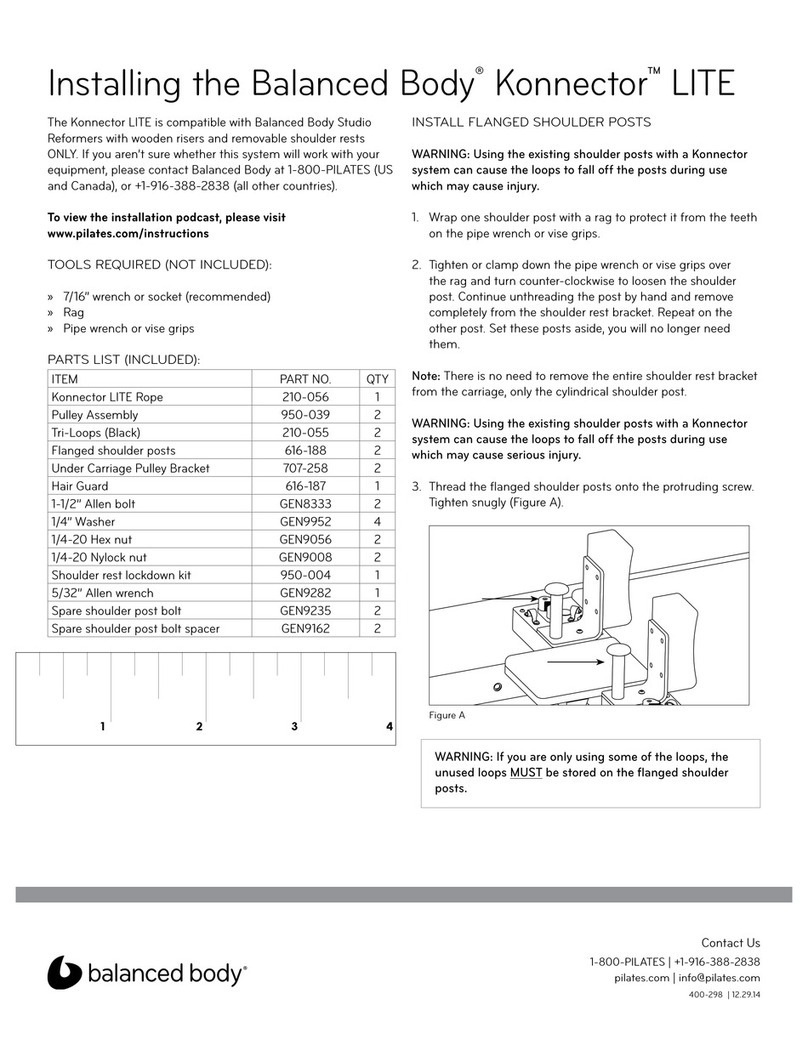
Balanced Body
Balanced Body Konnector LITE Instruction Manual
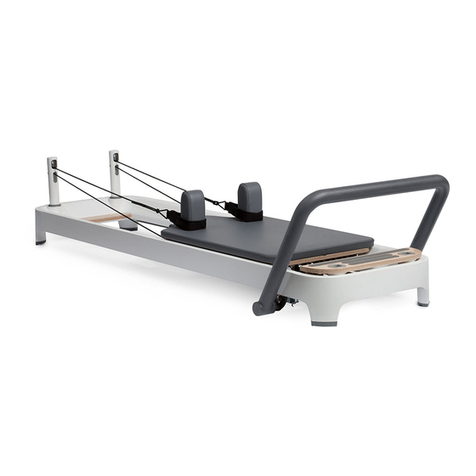
Balanced Body
Balanced Body Allegro 2 Reformer Programming manual
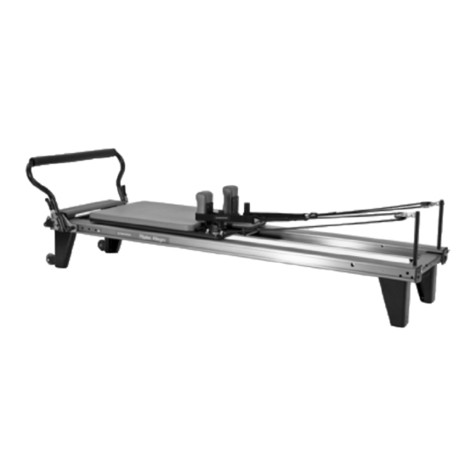
Balanced Body
Balanced Body Allegro Reformer Administrator Guide
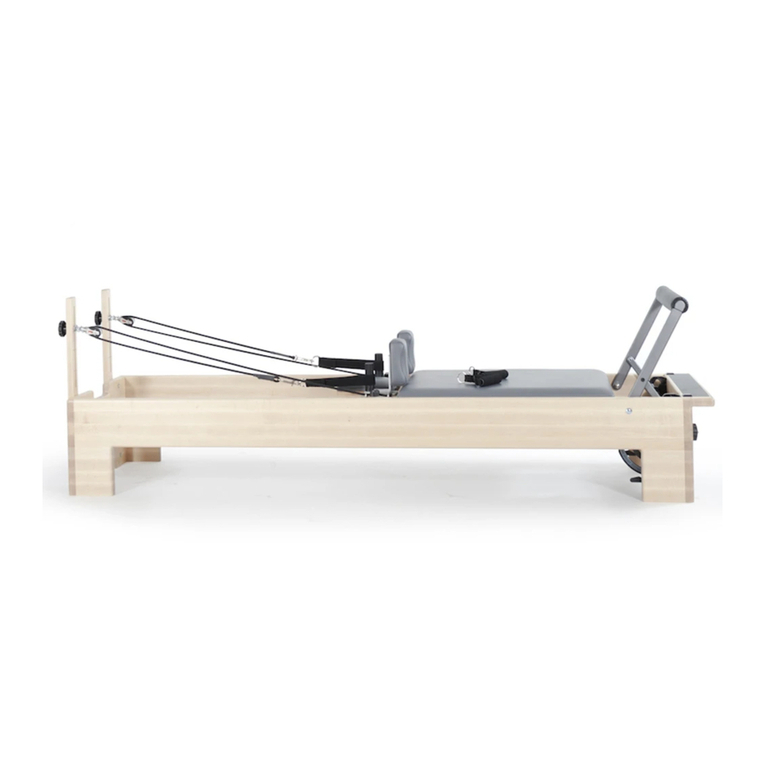
Balanced Body
Balanced Body Studio Reformer User manual
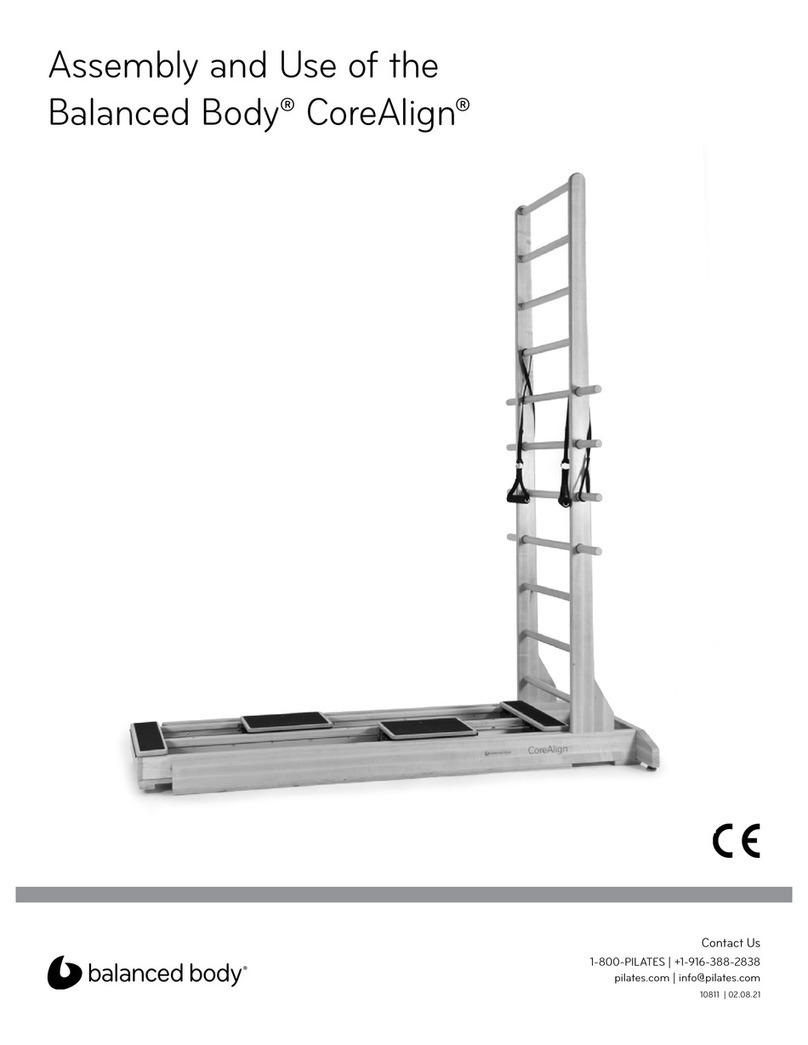
Balanced Body
Balanced Body CoreAlign Quick setup guide
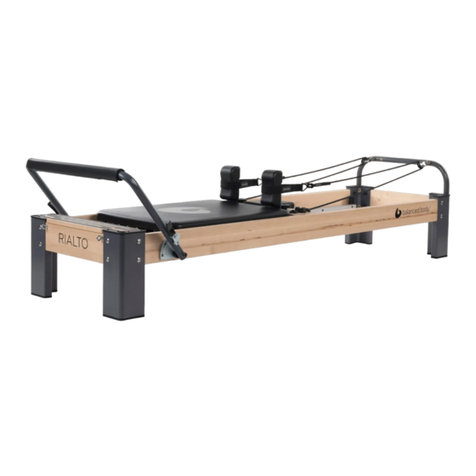
Balanced Body
Balanced Body Rialto with Riser Konnector Instruction Manual

Balanced Body
Balanced Body Contrology User manual
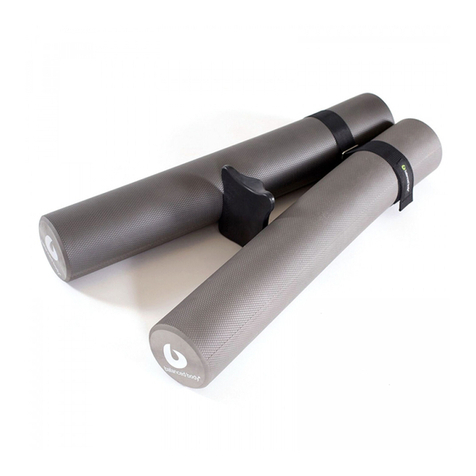
Balanced Body
Balanced Body Duet User manual

Balanced Body
Balanced Body Allegro User manual
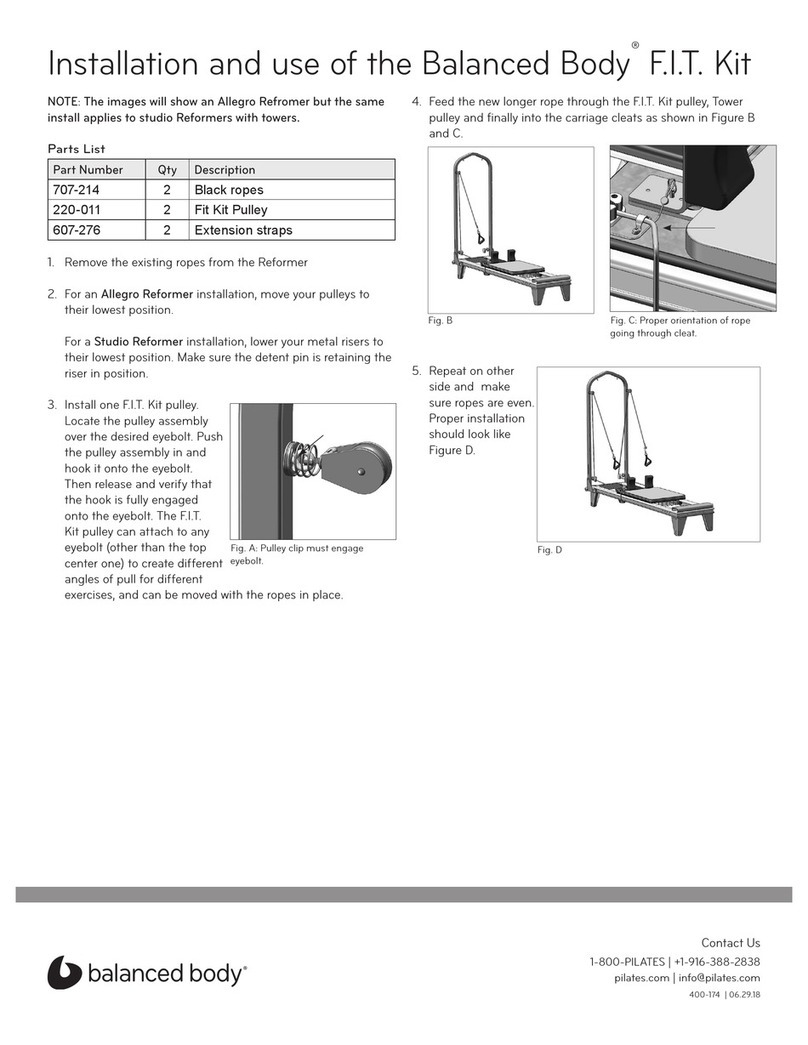
Balanced Body
Balanced Body F.I.T. Quick start guide
